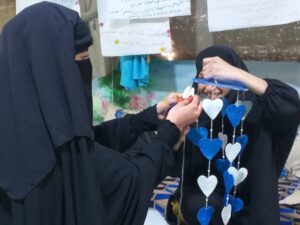Summary
The area east of the Euphrates river (Northeast Syria) has become a major leveraging point in Syria’s ongoing conflict. To this day, it is subject to shifting borders with a wide variety of local, regional, and international forces present.
In a new policy paper released by IMPACT, Kheder Khaddour argues that the ongoing instability of this region means that no political deal for Syria will conclusively resolve the overall conflict without including this region. However, the tensions in the area that make it so important in the broader conflict are also rendering a resolution in the short-term unlikely.
Main Points
- The defeat of ISIS did not bring peace to the area. The presence of the regime, the Turks and some remaining ISIS presence on the borders are keeping tensions high.
- International and regional powers continue to view the region’s instability within the “post-ISIS” framework. In fact, the volatility is more a legacy of four decades of regime control and the vacuum left by its absence than of the jihadi group’s relatively limited time there.
- Since mid-2012, the region has been in a constant state of self-perpetuating instability, with each power’s intervention generating further unrest, culminating in the recent Turkish military intervention.
- Russia’s presence has been more important following the Turkish military intervention. Russia has become more active, just a few kilometers from the US base. This makes the area a new field of influence for Russia and increases the likelihood that the regime presence will stay in place for the foreseeable future.
Conclusion
The area east of the Euphrates is a major component of Syria’s ongoing conflict, with strong regional and international dimensions. There can be no lasting peace in Syria that does not take into account this region and which does not attempt to connect it to the rest of Syria’s territory and break its isolation. Yet it is not included in the political process. This is the paradox of the area: You cannot create peace without including this region, but the Turkish veto in particular will ensure that it remains outside the framework of any potential settlement.
At the same time, the leaders of this region some of whom were ex-PKK fighters-have managed to establish themselves in the territory along the border with Turkey, creating the potential for regional conflict in the area.
These tensions will remain a dominant factor in the region until a Syrian-Syrian settlement that includes this area – a possibility that unfortunately seems unlikely in the immediate future.
Unlike opposition and rebel groups, the SDF has not tried to position itself as an alternative to the regime in Damascus itself. Their project, instead, is limited to a specific geography, with a political project built on top of that geography. The political ideology and rhetoric of the PYD-as well as the PKK-in recent years invokes a non-nationalistic vision linking demo-cratic communities across a variety of territories throughout the Middle East. It is therefore inherently non-territorial in its vision, and attempts to transcend the limitations of nation-states and modern borders. However, when the SDF has attempted to spread this vision outside Kurdish-majority areas in Syria into Arab-majority areas-where it does not have prior support or strong knowledge of local social dynamics-it has proved far more fragile. What this shows is that territory still matters-that is, their political view is still linked to a specific geography, which in turn means that the project itself has a certain fragility: Any changes to the control over this geography will necessarily entail a change in the political project.
The lack of institutional stability in the area, the experimental nature of governance structures, and the presence of a wide variety of local, regional and international players with conflicting agendas is likely to keep northeastern Syria in a volatile condition for the foresee-able future. Because the region is so central to the conflict, this will need to be taken into consideration in efforts to find a lasting solution for Syria’s ongoing conflict. Any settlement which does not include a consideration of the region’s complex dynamics-and the barriers they have posed to stability-will be unlikely to achieve lasting stability for Syria as a whole. At the same time, any attempts to stabilize the area internally without taking into consideration a broader, national-level settlement to the dynamics that are contributing to its instability are also likely to meet with limited success.


